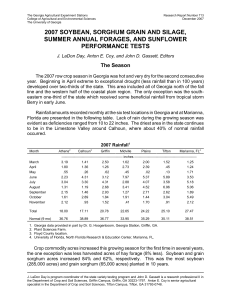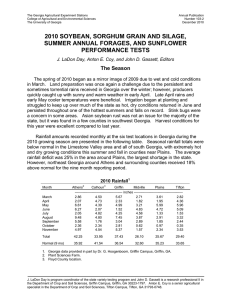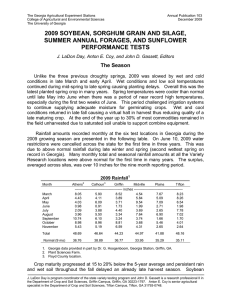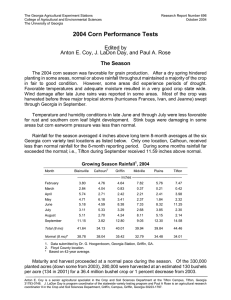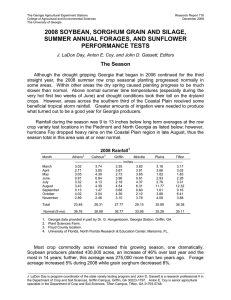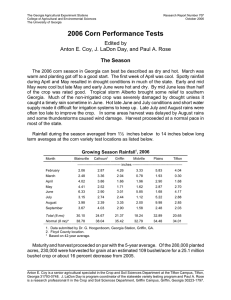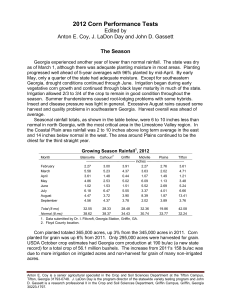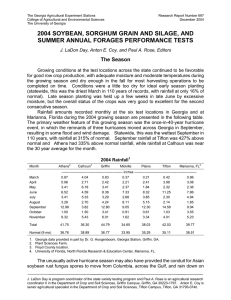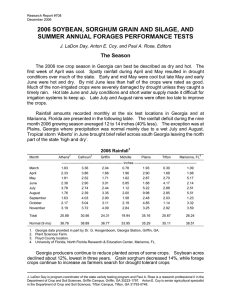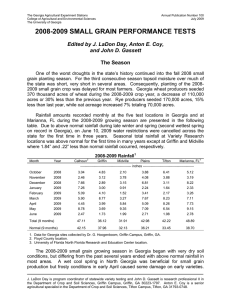Document 13150670
advertisement
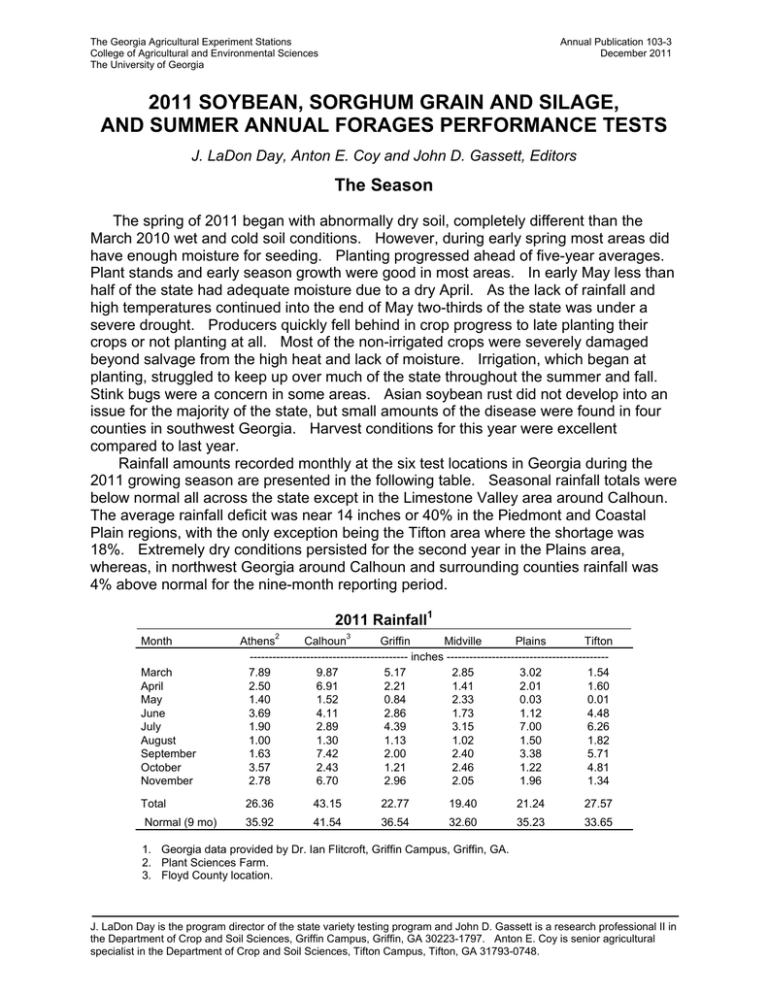
The Georgia Agricultural Experiment Stations College of Agricultural and Environmental Sciences The University of Georgia Annual Publication 103-3 December 2011 2011 SOYBEAN, SORGHUM GRAIN AND SILAGE, AND SUMMER ANNUAL FORAGES PERFORMANCE TESTS J. LaDon Day, Anton E. Coy and John D. Gassett, Editors The Season The spring of 2011 began with abnormally dry soil, completely different than the March 2010 wet and cold soil conditions. However, during early spring most areas did have enough moisture for seeding. Planting progressed ahead of five-year averages. Plant stands and early season growth were good in most areas. In early May less than half of the state had adequate moisture due to a dry April. As the lack of rainfall and high temperatures continued into the end of May two-thirds of the state was under a severe drought. Producers quickly fell behind in crop progress to late planting their crops or not planting at all. Most of the non-irrigated crops were severely damaged beyond salvage from the high heat and lack of moisture. Irrigation, which began at planting, struggled to keep up over much of the state throughout the summer and fall. Stink bugs were a concern in some areas. Asian soybean rust did not develop into an issue for the majority of the state, but small amounts of the disease were found in four counties in southwest Georgia. Harvest conditions for this year were excellent compared to last year. Rainfall amounts recorded monthly at the six test locations in Georgia during the 2011 growing season are presented in the following table. Seasonal rainfall totals were below normal all across the state except in the Limestone Valley area around Calhoun. The average rainfall deficit was near 14 inches or 40% in the Piedmont and Coastal Plain regions, with the only exception being the Tifton area where the shortage was 18%. Extremely dry conditions persisted for the second year in the Plains area, whereas, in northwest Georgia around Calhoun and surrounding counties rainfall was 4% above normal for the nine-month reporting period. 2011 Rainfall1 Month March April May June July August September October November Total Normal (9 mo) Athens2 Calhoun3 Griffin Midville Plains Tifton ------------------------------------------ inches ------------------------------------------7.89 9.87 5.17 2.85 3.02 1.54 2.50 6.91 2.21 1.41 2.01 1.60 1.40 1.52 0.84 2.33 0.03 0.01 3.69 4.11 2.86 1.73 1.12 4.48 1.90 2.89 4.39 3.15 7.00 6.26 1.00 1.30 1.13 1.02 1.50 1.82 1.63 7.42 2.00 2.40 3.38 5.71 3.57 2.43 1.21 2.46 1.22 4.81 2.78 6.70 2.96 2.05 1.96 1.34 26.36 43.15 22.77 19.40 21.24 27.57 35.92 41.54 36.54 32.60 35.23 33.65 1. Georgia data provided by Dr. Ian Flitcroft, Griffin Campus, Griffin, GA. 2. Plant Sciences Farm. 3. Floyd County location. J. LaDon Day is the program director of the state variety testing program and John D. Gassett is a research professional II in the Department of Crop and Soil Sciences, Griffin Campus, Griffin, GA 30223-1797. Anton E. Coy is senior agricultural specialist in the Department of Crop and Soil Sciences, Tifton Campus, Tifton, GA 31793-0748. Georgia soybean producers planted 155,000 acres this year, the same as during 2006 but a 43% decrease from last year and 67% less than two years ago. The state per acre yield for soybeans was 23 bushels, the same as nine years ago in 2002. This reflects a downward seed yield trend from the 30 bushel range of the last four years. Soybean production was 3.34 million bushels, 50% less than last year and the least produced in nine years. Sorghum producers planted 50,000 acres in Georgia this year, 9% more than last year. Land used for forage production in Georgia declined 12% below last year, and totaled 570,000 acres, 19% less than two years ago.
